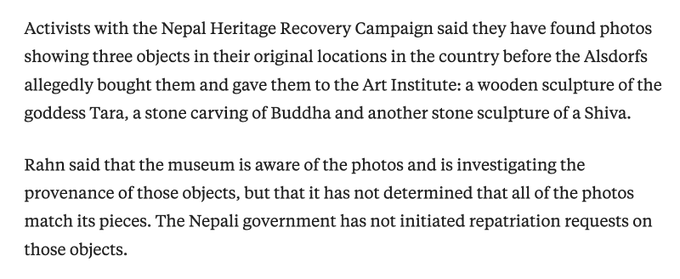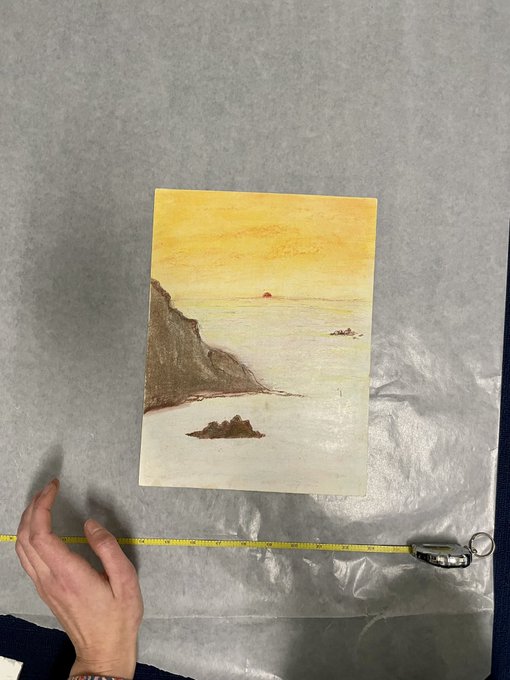Ahmed (Badr) Rabbani is finally free and home in Pakistan, after at Guantanamo without charges. He's selling some art he made there to get his life restarted: contact info@hrtlaw.org if you're interested! Here are some examples:
The Art Institute of Chicago knows about this photograph from 1970 of its Buddha sculpture embedded in the wall of a shrine in Nepal. It knows Nepal prohibited the export of such antiquities in 1956. And yet it's still working on whether to repatriate it...
The monastery also still keeps the empty wooden cases that once stored three 17th century paintings, which were stolen in 1979 and spotted in the collection of an NYC dealer before disappearing once more.
https://t.co/UZ9v35zOPk
Katja, after trying to help others escape the crackdown, fled to Poland. She became a painter and performance artist, but did not speak about the Red Orchestra until the artist Stefan Roloff tracked her down in 2006 to interview her for his research on the group.
In c. 1940, a student named Katja Meirowsky cut the swastika out of a stolen Nazi flag, sewed the rest into a dress, and wore it to her Berlin art school. This act nearly led to her death - and shows how important art for protest can be, if only to save the artist's own soul. 🧵
My brain fully understood this 15th century artwork as a painting of a lady with her mask pulled down around her chin.
His long-suffering wife Sophia is also shown in the “artwork.” (Here’s an 1883 photo of them).
Imagine being a guest at the 1881 ball celebrating the completion of Heinrich Schliemann’s new villa in Athens and having to say something nice to him about the ballroom’s custom ceiling painting of him as a cherub with his 🍆 out…
If you want to know more, visit https://t.co/SJ605CVQHs, or visit exhibitions of these works now up at @CatamountArts in Vermont or @DePaulArtMuseum in Chicago. Help bear witness!
Fortunately they are gorgeous, and heart- as well as back-breaking.


























